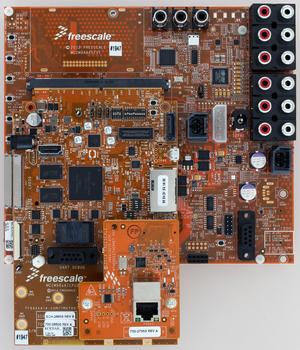Difference between revisions of "I.MX6DQ"
| Line 26: | Line 26: | ||
x) Close all debug session(s) that connect to Core 1, 2 or 3. |
x) Close all debug session(s) that connect to Core 1, 2 or 3. |
||
x + 1) Close debug session that connects to Core 0 |
x + 1) Close debug session that connects to Core 0 |
||
| + | |||
| + | == Tracing on NXP MCIMX6U6 == |
||
| + | |||
| + | ==== Minimum requirements ==== |
||
| + | In order to use trace on the NXP MCIMX6U6 MCU devices, the following minimum requirements have to be met: |
||
| + | * J-Link software version V7.00a or later |
||
| + | * Ozone V3.22e or later (if streaming trace and / or the sample project from below shall be used) |
||
| + | * J-Trace PRO for Cortex-M HW version V1.0 or later for streaming trace |
||
| + | * J-Link Plus V10 or later for TMC/ETB trace |
||
| + | |||
| + | ==== Trace buffer (TMC/ETB) ==== |
||
| + | '''Example Project:''' [[Media:NXP_MCIMX6U6_TraceBuffer.zip | NXP_MCIMX6U6_TraceBuffer.zip]] |
||
| + | |||
| + | ==== Streaming Trace ==== |
||
| + | Supported. Example project not available due to lack of eval boards with trace pins. But implementation is straightforward. The JLinkScript from the Trace Buffer example can be used for reference, what else is required is explained [https://wiki.segger.com/How_to_configure_JLinkScript_files_to_enable_tracing here]. |
||
| + | |||
| + | ==== Tested Hardware ==== |
||
| + | [[File:board_14_1666.jpg|none|thumb|Freescale MCIMXABASEV1 + MCIMX6xAICPU2]] |
||
Revision as of 17:12, 26 April 2021
Contents
Multi-core support for iMX6DQ (DualCore / QuadCore Cortex-A9)
J-Link script files are necessary to connect to the different A9 cores of the device. As a first step, it is mandatory to connect to the first A9 core (Core 0) and enable any other A9 core (Core 1-3) which the user would like to debug. It is the responsibility of the user to execute this first step.
A9 Core 0: Can be debugged without a script file, just select "Cortex-A9" as device.
The following commander file can be used to activate Cores 1-3.
The file serves as an example and may be altered for specific use cases.
A9 Core 0: File:NXP iMX6DQ Activate4Cores.jlink
A9 Core 1: File:NXP iMX6DQ Core1.JLinkScript
A9 Core 2: File:NXP iMX6DQ Core2.JLinkScript
A9 Core 3: File:NXP iMX6DQ Core3.JLinkScript
How to use script files:
Please refer to J-Link User Guide (UM08001), chapter 5.10 "J-Link script files"
Startup procedure is:
1) Start debug session that connects to Core 0 and activate the other cores.
This can be done by passing the following parameters to J-Link Commander:
-commanderscript PATHTOFILE/iMX6DQ_Activate4Cores.jlink -jtagconf -1,-1 2) Start debug session that connects to Core 1, 2 or 3 by using the respective provided script file 3) Start debug session that connects to Core 1, 2 or 3 by using the respective provided script file if required [...] x) Close all debug session(s) that connect to Core 1, 2 or 3. x + 1) Close debug session that connects to Core 0
Tracing on NXP MCIMX6U6
Minimum requirements
In order to use trace on the NXP MCIMX6U6 MCU devices, the following minimum requirements have to be met:
- J-Link software version V7.00a or later
- Ozone V3.22e or later (if streaming trace and / or the sample project from below shall be used)
- J-Trace PRO for Cortex-M HW version V1.0 or later for streaming trace
- J-Link Plus V10 or later for TMC/ETB trace
Trace buffer (TMC/ETB)
Example Project: NXP_MCIMX6U6_TraceBuffer.zip
Streaming Trace
Supported. Example project not available due to lack of eval boards with trace pins. But implementation is straightforward. The JLinkScript from the Trace Buffer example can be used for reference, what else is required is explained here.
